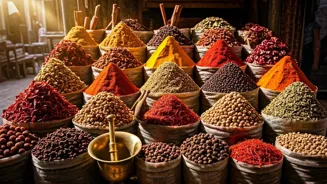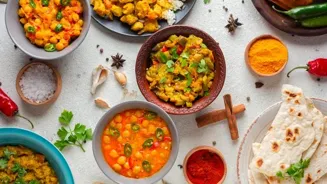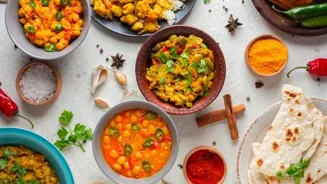Explore the fascinating journey of Indian ingredients - from farm to table. Discover the hard work behind your plate!
India, a land of vibrant culture and diverse landscapes, boasts a rich culinary heritage.
But have you ever stopped to consider the incredible journey your food takes before it arrives on your plate?
From the fertile fields to bustling markets and finally, your dining table, Indian ingredients embark on a fascinating voyage.
Understanding this journey not only enhances our appreciation for the food we eat but also sheds light on the hard work of farmers and the intricate systems that bring our meals to life. Let's delve into the story behind some common Indian staples.
The journey of rice from paddy fields to your kitchen
The journey of rice, a staple in many Indian households, begins in the paddy fields. Farmers meticulously cultivate the land, plant the seedlings, and nurture the crop through the monsoon season.
Imagine the backbreaking work involved in irrigating the fields, warding off pests, and ensuring a healthy harvest. Once the rice is ready, it is harvested, threshed, and then transported to local markets.
From there, it may pass through wholesalers and retailers before finally reaching your kitchen. The entire process relies on the dedication of farmers, labourers, and efficient transportation networks.
With changing climate, these practices are being innovated, with farmers adopting methods of less water consumption, drought resistant variants of rice, hence adopting to these challenges.
Farmers cultivate pulses for nutrition and income, supported by government schemes
Pulses, another essential component of the Indian diet, follow a similar path. Farmers across the country cultivate a variety of pulses like lentils, chickpeas, and kidney beans. These crops are often grown in rain-fed areas, making them vulnerable to weather fluctuations.
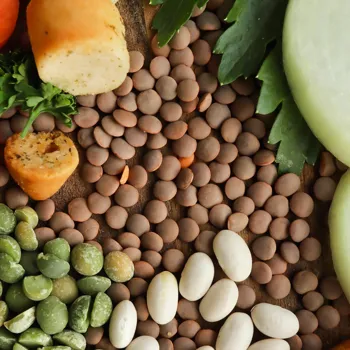
After harvesting, the pulses are processed to remove the outer husk and sorted according to quality. They are then sold in local markets or directly to consumers. The government also plays a role in supporting pulse production through various schemes and initiatives.
Also one of the important aspects of pulses is that due to its nutritional properties, it is being promoted a lot in the rural areas, as it provides a good amount of protein and minerals in the body. So the farmers are getting a good amount of earnings as well.
Indian spices: Diverse origins, labor-intensive cultivation, global appeal, rich heritage
Spices, the soul of Indian cuisine, have a particularly interesting journey. From the cardamom hills of Kerala to the turmeric farms of Andhra Pradesh, spices are grown in diverse climates and terrains.
The process of cultivating spices can be labor-intensive, often requiring manual harvesting and careful drying techniques. Once dried, the spices are graded, processed, and packaged for sale. Indian spices are renowned worldwide for their quality and unique flavors.
Their journey from farm to table is a testament to the country's rich agricultural heritage. Farmers now a days are innovating and are doing mixed crop farming, thus enabling them for maximum profit.
Wheat farming process impacts bread taste and texture
Wheat, used to make rotis, chapatis, and other Indian breads, is another important crop. Farmers prepare the land, sow the seeds, and irrigate the fields, hoping for a good monsoon season. After harvesting, the wheat is threshed, cleaned, and then transported to flour mills.
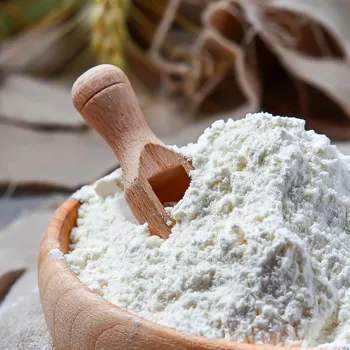
The mills grind the wheat into flour, which is then sold to consumers and bakeries. The quality of the wheat and the milling process both play a crucial role in determining the final taste and texture of the bread.
With high demands of wheat, and due to different variant available, all have a different taste, and hence the consumer demand is met.
Vegetables sourced from farms to markets with tech for freshness
Vegetables, adding color and nutrients to our meals, come from a variety of sources. Some are grown in large-scale farms, while others are cultivated in small kitchen gardens. Farmers carefully tend to the vegetables, providing them with water, fertilizer, and protection from pests.
The vegetables are then harvested, sorted, and transported to local markets. From there, they are sold to consumers, restaurants, and food vendors. The freshness and quality of the vegetables greatly depend on the efficiency of the supply chain.
With the use of technology, now the vegetables as soon as they are harvest, are kept at low temperature at "Collection Center" so that the vegetables will remain fresh for long.
Understanding Indian ingredients supports farmers, food system, and culinary heritage for sustainable future
Understanding the journey of Indian ingredients allows us to appreciate the efforts of farmers, the complexities of the food system, and the rich culinary heritage of India.
By making informed choices about the food we eat, we can support sustainable farming practices, promote fair trade, and ensure that future generations can continue to enjoy the bounty of the land. We should encourage local growers and buy locally grown food whenever possible.
This helps to reduce transportation costs and support the local economy. It's also important to reduce food waste by planning meals carefully. The food on our plate has a story to tell, and by listening, we can contribute to a more sustainable and equitable food system.
With the help of government and other NGOs, the awareness among farmers is increasing and hence they are doing farming which is sustainable.
AI Generated Content. Glance/InMobi shall have no liability for the content
